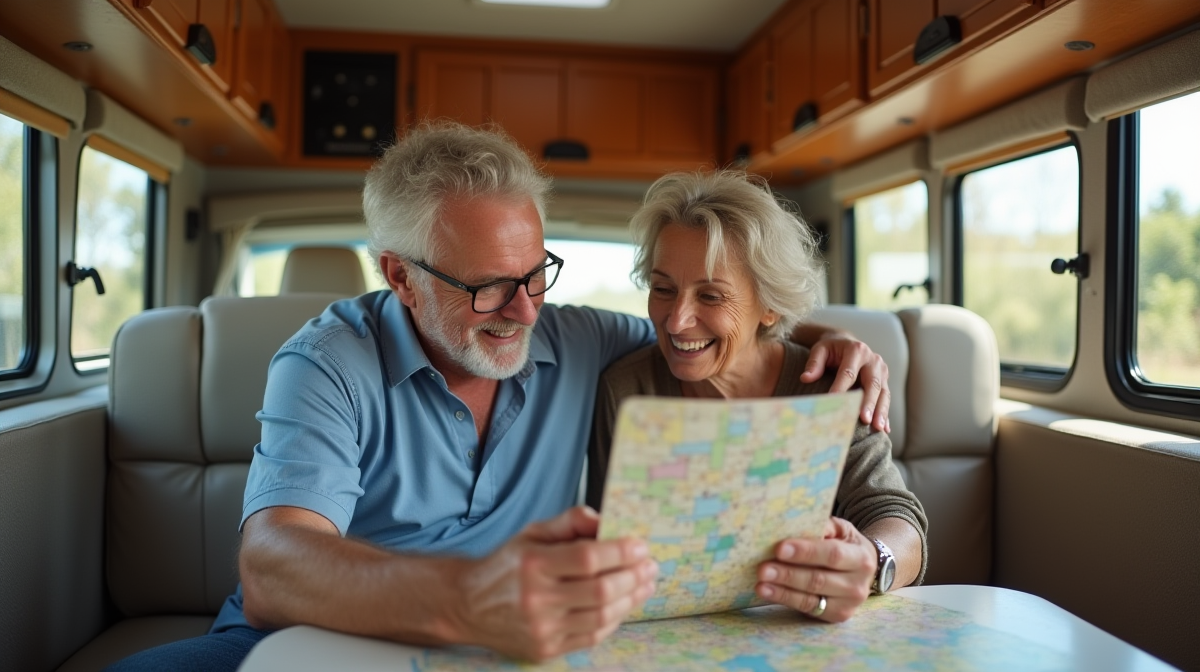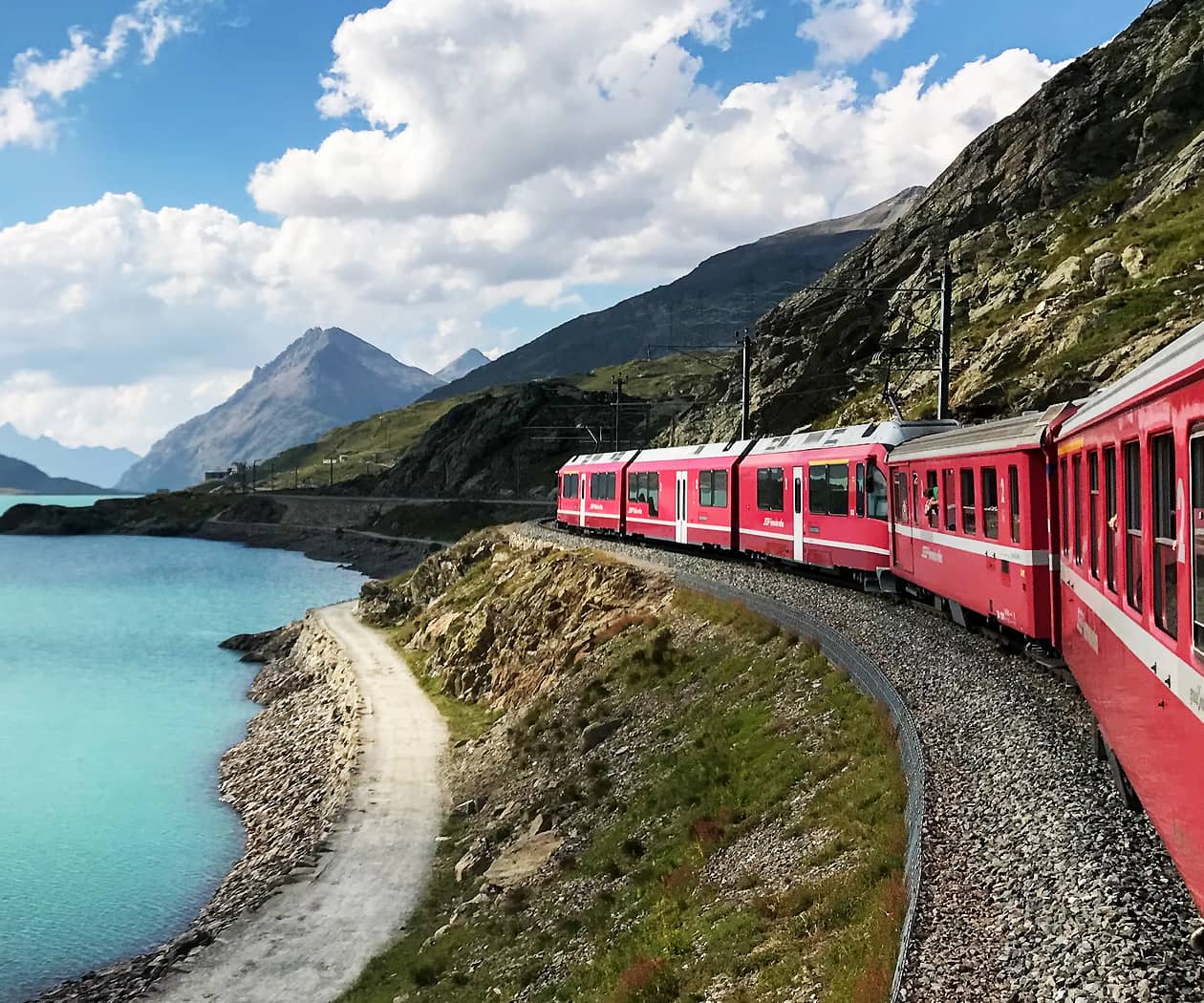Introduction
The allure of the open road, the freedom of setting your own pace and route, the joy of discovering new sights at every turn – who says these are only for the young? As a senior, you might be grappling with the challenge of planning a road trip that caters to your unique needs, without compromising on comfort or excitement. You might have concerns over accessibility, the physical strain of long drives, and the relevance of attractions along the way. Furthermore, the inability to enjoy a well-deserved road trip due to these hurdles could leave a disappointing void in your bucket-list. However, take heart! We have drafted the ‘Ultimate Guide to Senior-Friendly Road Trips’ just for you. This comprehensive guide lays down comfortable, slower-paced routes with accessible attractions. It also offers handy advice on planning your journey, ensuring you enjoy the vacation you’ve always dreamed of, while addressing all your concerns. Embark on your adventure with a carefree spirit and let the wanderlust guide your way!
Planning Your Senior-Friendly Road Trip
Senior-friendly road trips are a brilliant way to explore, amble along at a comfortable pace, and stop off at accessible attractions along the way. However, a memorable road trip calls for some effective planning. Here are some useful tips to assist you in planning your senior-friendly road trip.
Choose a Comfortable Vehicle
Your ride is the heart and main stage of your road trip. It needs to be comfortable, reliable, and safe. If you’re traveling with others, ensure it has ample space so everyone can stretch out. For an example, consider renting a spacious van or an RV, which allows for flexibility of rest stops and includes onboard facilities.
Pace Your Travel
While it might be tempting to cover as much ground as possible, try to limit your driving time to 4–6 hours per day. It’s important to take frequent breaks, stretch your legs, and refresh. Remember, the goal is to enjoy the journey, not just the destination!
Important Equipment and Necessary Meds
Always carry essential amenities such as a first aid kit, essential meds, snacks, bottled water, road maps, GPS, and a mobile phone with a good roaming network. Also, remember to pack your sunglasses and prescription glasses, as hours of driving can strain your eyes.
Plan Accessible Stops
Make sure to research ahead of time for senior-friendly attractions. Many places now cater to the needs of seniors. Look for walking trails that are flat and easy to navigate, museums that offer wheelchairs, or tourist sites that provide discounts for seniors.
Accommodation
Book your lodgings in advance to ensure they’re senior-friendly. Look for places that provide accessibility features, such as ground-floor rooms or elevators, grab bars in the shower, and restaurants that cater to dietary requirements.
Taking these pointers onboard, I once planned a road trip across California’s scenic Highway 1. Initially, I assumed we could drive for 8 hours a day. However, after day 1, it was clear that was too ambitious. We revised our plan and limited ourselves to 4 hours of driving a day. We also made sure our accommodation had walk-in showers and comfy beds, which was a game-changer.
Remember, AAA’s guide for mature drivers suggests it’s important to avoid driving during dusk and dawn due to decreased visibility.
In conclusion, road trips are fantastic in offering freedom to explore at one’s own pace. However, they require thoughtful planning, especially for seniors. So, be prepared, take it slow and savor every moment of your journey. This way, a senior-friendly road trip can hold new adventures and create priceless memories. Happy travelling!

Choosing Comfort-Oriented and Accessible Routes
Choosing the ideal road trip route largely depends on the specific needs of your group, but when traveling with seniors, some paths can certainly be more senior-friendly than others. The key elements to consider are accessibility and comfort, which can significantly improve your overall travel experience.
A. Comfort-Oriented Routes
When pursuing a comfortable journey, the first thing to consider is the type of road you’ll be traveling on. Highways, for instance, tend to offer smoother rides, well-maintained facilities, and plenty of rest stops – essential requirements for elder travelers. In contrast, scenic byways provide a more relaxed pace and stunning views, but they can be harsh on older bodies due to their often winding, bumpy pathways.
When I retired, I took a cross-country road trip with my 70-year-old mother. We quickly learned that alternating between highway and scenic routes was the best approach. This balance provided us the ease of the highway, combined with the breathtaking experience of the byway. Problem solved!
B. Accessible Attractions
Not every attraction is senior-friendly. Some may involve extensive walking, stairs, or lack proper facilities for the elderly. Spend some time researching on websites such as AAA Travel or Visitor Fun for accessible attractions.
On our road trip, we loved the accessible trails at National Parks like the Yellowstone and Acadia. They offer wheelchair-friendly paths and provide free or discounted passes for seniors, making them amazingly cost-effective!
Planning for Pit Stops
Scheduling regular pit stops can make a world of difference in a senior’s travel experience. Research suggests that adults over 60 should stand up and move for at least 10 minutes each hour. Therefore, it’s beneficial to integrate pit stops either at rest points, scenic spots, or attractions around every 60-90 minutes.
One of our favorite pit stops included “The Big Texan Steak Ranch” in Amarillo. With its Texan-sized meals and excellent restroom facilities, it was the perfect rest stop full of local flavour!
Accommodation Adjustments
When it comes to selecting accommodations, consider hotels that offer senior-friendly facilities like ground-floor rooms, elevators, and handicap-accessible bathrooms. I suggest using websites like Senior Hotel Discounts or AARP to receive exclusive discounts for seniors.
Our most memorable stay was at the cozy “Bluebird Inn” in Bear Lake, Idaho. It had breathtaking views and a zero-step shower, making it immensely positive for my mother.
In conclusion, a senior-friendly trip requires thoughtful planning catering accessibility and comfort. The key is to balance memorable experiences with the comfort and ease of your older companions. Remember, it’s not just about reaching the destination, but about enjoying the journey as well.

Packing Essentials for Comfort and Safety
When preparing for a senior-friendly road trip, ensuring comfort and safety takes precedence. Having experienced numerous road trips myself, and learning from past mishaps, I’ve compiled a list of packing essentials which have made my travels more comfortable and safer. Here are my top recommendations:
1. Medication
Many seniors, myself included, need to take regular medication. I remember one road trip where I forgot my cholesterol medication at home. The nearest pharmacy was miles away and I had to map a whole new route. Lesson learned.
Tip: Always keep a list of your medications and their dosages. Also, bring enough to last the entire trip, plus a few extras in case of delays. Check the FDA website for tips on traveling with medicine.
2. Comfortable Clothing and Footwear
Comfort is key during road trips. One time, I packed my most stylish, albeit uncomfortable shoes for a road trip. We ended up doing a lot of walking and at the end of the day, my feet were terribly sore. Comfortable clothing and footwear are essential.
Tip: Choose clothing that is lightweight, easy to layer and good for walking. For footwear, opt for something supportive, like walking shoes or sneakers.
3. Food and Water
Stay hydrated and snacked up. Carry enough bottled water and healthy snacks like fruits, nuts, cheese cubes, and yogurt. I can’t count the number of times I’ve been miles away from any sort of food establishment and was grateful I had packed a snack.
4. Essential Documents
Include important documents such as your ID, health insurance card, AAA card if you are a member, and a list of emergency contacts. I once faced a situation where medical assistance was needed, having my health insurance card readily available aided in swift medical assistance.
5. Entertainment
Long drives can get boring. A good book, magazine, music playlist or podcast can make time fly by. On a few occasions, an engaging audio book has turned a potentially monotonous drive into an enjoyable journey. Audiobooks can be obtained from apps such as audible.
6. Comfort Items
Neck pillows, blankets, a hat, sunglasses, and window shades can make the journey more comfortable. I’ve learned that having these at hand can help you adjust to varying conditions during the trip very smoothly.
Remember, the goal of a road trip isn’t just reaching your destination; it’s about enjoying the journey. Given that 37% of baby boomers plan to take a vacation in 2021 according to AARP, these packing tips aim to make your senior-friendly road trips both comfortable and safe.

Accessible and Senior-Friendly Attractions
The tourism industry is steadily acknowledging the significant spending power of the senior population, with over 1.2 billion seniors traveling each year (Skift, 2018). As a result, destinations are becoming more accessible and senior-friendly. In this context, we will explore some top-notch accessible and senior-friendly attractions that provide comfortable and slower-paced routes for elderly travelers.
Eight years ago, I embarked on a journey, striving to identify destinations that offer an accessible environment, not just in terms of physical infrastructure but even covering aspects like ease of transportation, friendly local communities, and medical facilities. The lessons learned during this journey transformed my perspective and helped me appreciate the value of accessibility as an essential factor for tourism.
Washington D.C, USA:
First in line is Washington D.C, the capital city of the USA. With most of its architectural attractions located close to each other, it was a delightful surprise for wheel-chair bound seniors on my trip. Keynote museums, like the Smithsonian Museums and the National Gallery of Art, offer wheelchairs for visitors who need them, freeing them to explore the wonders of art and history comfortably.
Vancouver, Canada:
Vancouver was another revelation. With its conveniently located parks, such as Stanley Park and Queen Elizabeth Park, seniors can relax and even participate in low-impact exercise options. Plus, the city’s transit system is designed to accommodate various mobility needs, making it an appealing choice for seniors.
Barcelona, Spain:
Over in Europe, Barcelona outshone others, courtesy of its accessible public transportation. Its beaches, like Nova Icaria, are wheelchair-friendly. The city’s famous landmarks, such as the Sagrada Familia and Park Güell, offer discounts for seniors, making them both pocket-friendly and enjoyable.
Gold Coast, Australia:
Lastly, Gold Coast in Australia is an example of a senior-friendly city. Its programmed festivals and concerts primarily suited for the elderly population are a big hit. Broadbeach and Burleigh Heads, with their serene and beautiful scenery, are ideal for senior travelers looking at easy-paced adventures.
While these cities are just a few examples, the main takeaway from my journey has been universally applicable. It is of utmost importance to assess and confirm the senior-friendliness of a destination before planning a trip. Long-distance travel can often be stressful for older individuals, and understanding accessibility options at the destination can help in mitigating these challenges.
Remember, the essence of travelling is to enjoy, relax, and experience. For our senior loved ones, the destinations that provide these with comfort and accessibility are the most fulfilling.

Slower-Paced Travel Tips for Seniors
In your golden years, travel should be enjoyable, relaxing and perfectly paced to your liking. Slower, more deliberate travels offer various benefits at this stage in life, such as better absorption of culture, chances for meaningful interactions and opportunities to appreciate the details that typically get ignored in the rush of typical tourism. Here are some slower-paced travel tips for senior travellers, designed to make your journeys more comfortable and fulfilling.
Choose Comfort Over Convenience
When planning a trip, ensure it provides the optimum level of comfort. This could mean spending a little extra on hotel accommodations with better facilities, or preferred seating on transport for added comfort. According to AARP, 76% of baby boomers are willing to shell out more for convenience and improved comfort while traveling.
Focus on the Journey, Not the Destination
Try to select travel routes that are scenic and enjoyable, rather than those just geared towards getting you to your destination quickly. Explore meandering routes with unexpected gems like small-town cafes, local handicrafts shops or historical monuments. For instance, Northern California’s Hwy 1 Discovery Route offers an unforgettable Coastline journey, full of slow-paced discovery options, wheelchair-accessible trails and coastal viewing points.
Invest Time in Preparation
Spend ample time researching your destination, available amenities, local customs, and norms, etc. Being well-prepared helps lower the stress levels and lets you enjoy the trip better. Back in the days, when I first started travelling, I learnt this the hard way on my maiden trip to London, unaware of the weather, I packed the wrong clothing and had to spend extra on suitable attire.
Embrace the Local Culture
Being open to experiencing local culture can enrich your travels. Attend local events, dine at family-run eateries, participate in local traditions. In contrast to rushing around ticking off tourist hotspots, immersing oneself in the local culture gives a true a taste of life in foreign lands.
Take Regular, Leisurely Breaks
Rather than moving from one place to another in a rush, make sure to plan regular breaks. These pauses could involve a quiet moment in a city park, a leisurely cup of coffee in a local café, or a short nap to recharge your energy for the continuing journey.
Consider Slow Modes of Transport
Consider travelling by train or renting an RV instead of flying or driving. It allows you to see the countryside, take in hidden landscapes, and enjoy small towns that are often missed when traveling via high speed routes.
Through personal experiences, I’ve discovered slower-paced travel to be enriching, relaxing, and soulful. You can truly appreciate the subtle nuances of your surroundings, engage deeply with locals, and return home with memories that are more authentic and heartfelt.

Maintaining Health and Well-being While on the Road
Whether you are heading off on a short road trip or embarking on an extended travel adventure, maintaining your health and well-being while on the road is crucial, especially for senior travelers. Here are a few key tips to keep in mind for a seamless and safe trip.
Plan and Prepare Well
Before the journey, make sure to schedule a visit to your healthcare provider to discuss any potential risks or necessary accommodations. Consider packing extra medication in case of travel delays. Remember, it is always better to have too much than not enough.
Stay Hydrated and Snack Wisely
Dehydration can cause fatigue, headaches, and other issues. Carry a refillable water bottle. Refill it regularly, and avoid caffeinated drinks that can cause dehydration. Also, it is recommended to choose healthy snacks. Pack whole foods, such as fruits and nuts, to curb hunger and keep energy levels stable.
Keep Active and Take Breaks
Physical activity helps maintain strength and balance, reducing the risk of injury. Plan regular stops to stretch your legs, take short walks or do some quick exercises. A study done by NIH suggests 30 minutes of moderate-intensity activity most days of the week for seniors.
Rest and Recuperate
A road trip is as physically demanding as it is exhilarating. Ensure you receive a good night’s sleep as lack of sleep can weaken your immune system making you susceptible to illnesses. According to the National Sleep Foundation, adults should aim for 7-9 hours of sleep per night.
In one of our geocaching road trips, we didn’t prioritize rest and overestimated the pace we could maintain. We ended up returning home early due to sheer tiredness. Lesson learned? Modulate activities according to your capacity and take frequent rests.
Mental Health Matters
Travelling isn’t just about covering points A to B. It’s a journey, not a race. Encourage mindful travel- take in the scenery, engage with locals and stimulate the mind with new experiences.
My personal experience navigating the pebble beaches of Nice taught me the importance of spending time with nature. Interacting with the locals, I discovered the tug-of-war between the city’s rich history and modern-day tourism, offering a perspective one can’t obtain from guidebooks.
Secure Travel Insurance
Travel insurance offers peace of mind. It protects against unforeseen circumstances like illness, medical emergencies, or flight cancellations. Companies like AARP offer senior-friendly travel insurance packages.
Remember, maintaining well-being during travel isn’t complicated, but it does require thoughtful planning. By following these tips, you will be well-equipped to enjoy a rewarding and rejuvenating road trip. Bon voyage!

Conclusion
In conclusion, there’s no denying that the open road is a fascinating place to be, teeming with endless possibilities and adventure. Once you incorporate the insights from our “Ultimate Guide to Senior-Friendly Road Trips: Comfort, Accessibility & Travel Tips Unveiled!”, you’ll realize that age is just a number and shouldn’t stop you from exploring the world’s many wonders.
With careful planning, strategic packing, and a solid understanding of the available resources, your road trips can be as comfortable, accessible, and joy-filled as ever. Whether you decide to explore the beauty of the Garden Route in South Africa, encounter the historical landscapes in Europe, or cruise the scenic Pacific Coast Highway in California, each location comes with its unique blend of senior-friendly features and adventures waiting to be discovered.
Don’t forget to refer back to this guide as you prepare for your adventure, bookmark your favourite tips and always remember to embrace the journey as much as the destination. Besides, travel isn’t entirely about reaching a location — it’s about the experiences lived, memories created and friendships forged along the way.
Moreover, don’t hesitate to use the resources available at your disposal, be it travel agencies or online portals specialised in arranging senior-friendly trips. After all, their expertise can be invaluable in ensuring you have a comfortable and worry-free vacation.
We hope this guide sparks a sense of wanderlust in you and encourage you to stay optimistic, eager and empowered to explore what the world has to offer! Remember, your road trip days are far from over. In fact, with the ‘Ultimate Guide to Senior-Friendly Road Trips’ in your hands, they might just be getting started. So buckle up, plan your trip, and set off on the vacation you’ve always dreamed of. We wish you safe, memorable, and enriching travels ahead.
Keep the spirit of adventure alive and happy trails to you!









